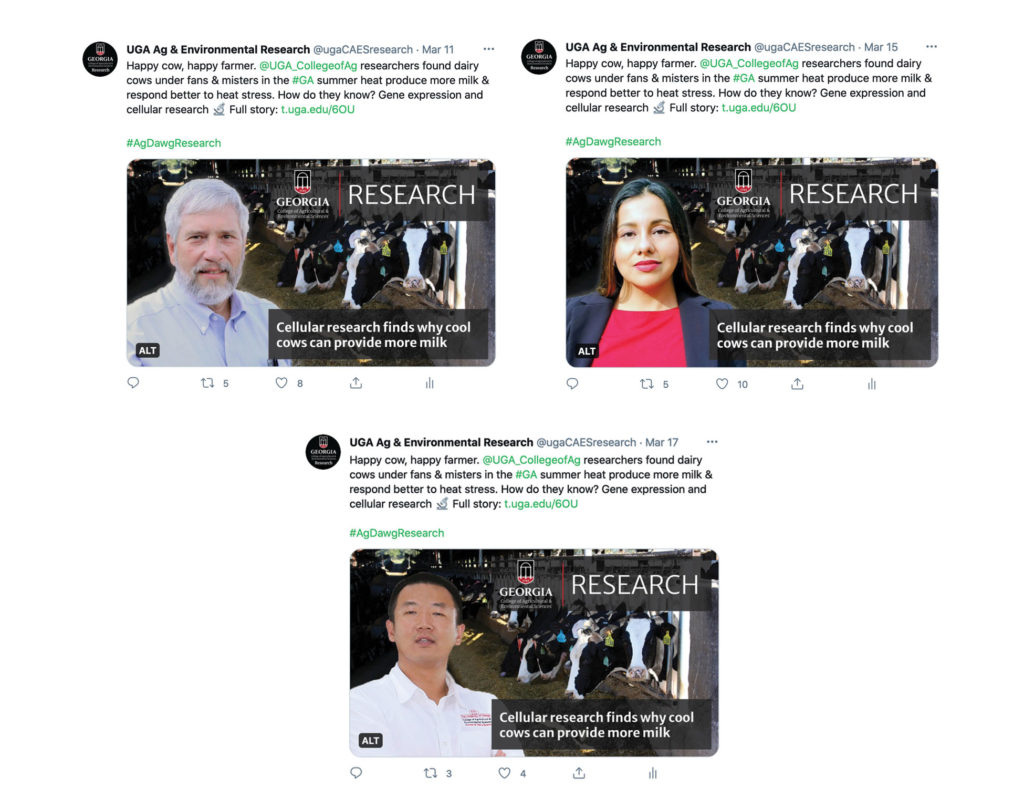
Allison Fortner, a second-year doctoral student studying science communication in the University of Georgia’s Agricultural Leadership, Education and Communication Department, recently published an article in the Journal of Applied Communication. Co-authors in the research project included Dr. Alexa Lamm, Dr. Abigail Borron, Dr. Jessica Holt, and Dr. Allen Moore.
An article from Fortner’s master’s thesis, this publication explored the influences of researchers’ perceived age, race, and gender on engagement with tweets featuring UGA College of Agricultural and Environmental Sciences (CAES) scientists. This exploratory study used native engagement metrics from a live and active Twitter account over seven months to determine how followers engage with posts featuring peer-reviewed research findings and diverse scientists.
Descriptive analysis of the engagement metrics found tweets featuring younger scientists received more engagement than older scientists. Female scientists typically received more engagement on their posts than male scientists, and Non-White scientists’ tweets performed better than White scientists’ tweets with the exception of engagement rate.
This article is part of Fortner’s overarching focus on strategically reaching targeted audiences with information on research happening within UGA CAES through her assistantship funded by the Office of the Associate Dean for Research in CAES. Though more research is needed to further explore the findings of the study, authors recommended communication professionals strategically feature diverse agricultural researchers on Twitter to influence audience engagement with agricultural research content.
Read the full article in the Journal of Applied Communications here.